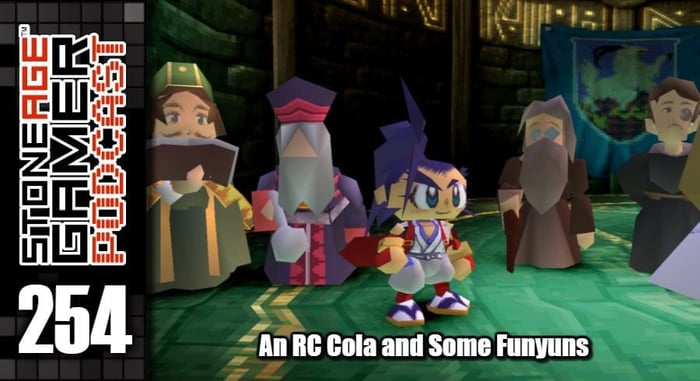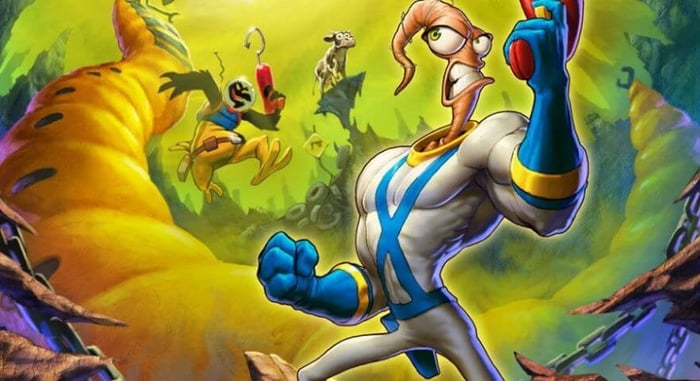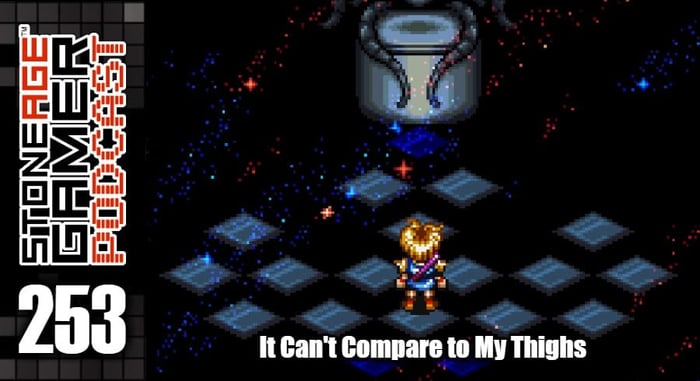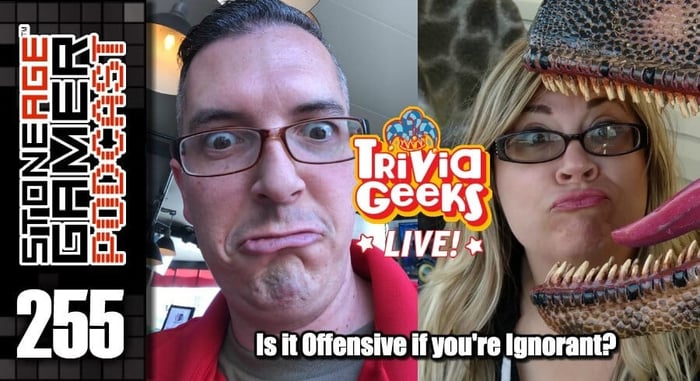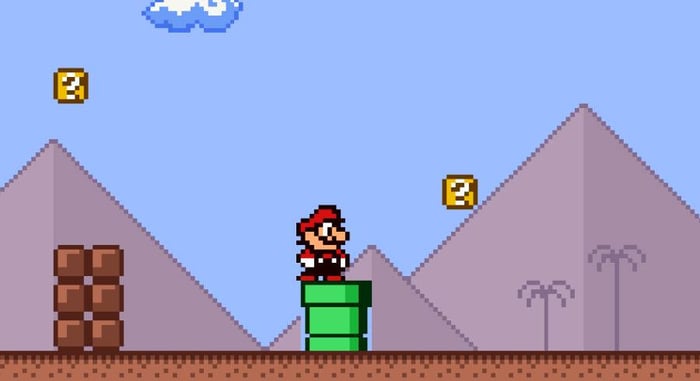
"Fixing" the Past
Man, the things people have been doing with retro games lately has been blowing my mind. In the past few weeks I’ve seen PilotWings with more clarity than I ever thought possible, and Gradius III running without any slowdown. It’s really fascinating to see folks go back to old games and fix problems that bugged us when we were kids. Every time I hear about someone working on something like this, I’m beyond curious to see how it’s going to turn out. But a small part of me gets a little scared, too. Tinkering is one thing, but revisionist history is quite another.
When these “fixes” are done by fans, it’s awesome. Fan works are just that, fan work. But when big companies do it, things have the potential to get a little bit dicey. Take, for example, the Mega Man Anniversary Collection for PS2, Xbox, and GameCube. Here we had the first time the classic Mega Man NES games were bundled together and resold to the masses, at least here in America. Problem was, these games were enhanced. Things like slowdown and flicker were removed, and sound channels never cut out, meaning that you could always hear every part of the music, even when a Robot Master’s life bar was filling up. On the flip side, if you used a turbo fire button, the sound of Mega Man’s arm cannon would get really loud because the game would play every single effect on top of one another. Was this an awesome way to experience these classic titles? Absolutely. Did it properly preserve history? Not so much. Should it have to, though? Well that’s kind of a big question.
Let’s do a quick sidestep and look at the Nintendo 64 Virtual Console library. When running on Wii or Wii U, Nintendo 64 games look considerably smoother than they did on their original hardware. And as a player, that’s usually pretty great. But turn on an actual Nintendo 64 and play those same games and, well, it becomes pretty clear that that isn’t exactly faithful emulation. In both of these cases, I was a very happy customer. Playing Mega Man 2 without the intro to the boss music getting cut off because of the sound of a life bar filling up was really cool. Seeing Super Mario 64 with nice sharp edges makes it a lot easier to look at. But from a historical perspective, it’s kind of weird seeing these things enhanced while being presented as straight ports. The Mega Man Legacy Collections eventually gave modern gamers a more accurate taste of what these games were like when they first came out, but Nintendo 64 stuff never actually looked that good, and that’s the only official any of these games are available today. Naturally, if you’re going to make these games available to play on modern hardware, you have to take the TVs they’re being played on into account. But actually modifying/improving the way the games look and function is weird.
It seems like a pretty weird thing to complain about when I actually write it down, because I’m always all about finding the best ways to play my old games. When Nintendo gives me the option to play my NES and SNES games in pixel perfect mode, I always go that route, even though it’s technically less accurate to how the games looked when we played them. But playing Super Mario 64 without having to suffer the Nintendo 64’s hideously muddy presentation is a pretty nice treat. Gunning through Mega Man 3 with no slowdown and hearing every note of its amazing soundtrack is quite special. So where’s the line? How much of this kind of stuff should game companies include in their games?
I think the best option is, well, options. It’s great when developers take the time to fiddle with old games to make them more playable today, but it’s better when accuracy is taken into account. It’s like when a movie gets a remaster and they remove the film scratches and remaster the sound. Sure, it can sometimes make things worse, but when it’s done right it’s almost like a filter has been removed from your mind. That said, historical accuracy is incredibly important to me. So I suggest this. If a classic game compilation is being made, players should always be presented with the ability to toggle game alterations in re-releases and compilations whenever possible. If I want my game to flicker and slow down the way I’m used to, any time there’s an option to get rid of it, it should be an option only. To recall my earlier movie comparison, we don’t want a Star Wars Special Edition situation on our hands. For anyone who isn’t a Star Wars fan, the original movies that came out in the 70s and 80s aren’t available anymore. There are new enhanced versions with “modern” GCI and actual content changes that arguably make the movies worse, but instead of keeping the originals readily available, the new versions with the changes are the only ones that people can buy, meaning that most kids today who are experiencing Star Wars, unless they have incredibly dorky parents (like me) who get their hands on the Despecialized Editions, are only going to know the Special Editions. And that, in my opinion, is not right. Video game history is important, and the limitations of the past are an important historical context for appreciating the games of today. Does presenting the games of the past with the trappings of the modern day take away from one’s ability to fully appreciate the evolution of the industry? Am I thinking about this too much?
Alright, let’s put the doom and gloom aside for a bit and focus on the positive. There have been some incredibly impressive enhancements done to old games that have caught my attention, so let’s look at a few of my favorites.
Gradius III SA-1
This upgrade here is the most recent I’ve seen, and it completely messes with my head. I never spent a TON of time with Gradius III, but that’s mostly because the game is incredibly bogged down by slowdown. But now there’s a version of the game that runs as if it was made using the SA-1 chip. For those not in the know, that’s the chip that made Super Mario RPG possible on the SNES. Just look at this thing go!
Super Mario Land DX
I’ve always loved Super Mario Land, and it just so happens to be the Mario game most in need of a remake. In lieu of that though, we have this wonderful visual upgrade called Super Mario Land DX. Not only does this add color to the black and white classic, but it actually redraws some of the sprites to make them look a little more in line with what the Game Boy was eventually capable of. I do wish they went a tiny bit further with it, like having Mario’s outfit change colors when he gets the Super Ball powerup, but minor gripes aside, this is a project that was clearly put together with serious love for the source material.
HD Mode 7
Mode 7 impressed the heck out of me as a kid, and I would argue that the effect still has its charm today, but this… wow. Just wow. The video I’ve linked to here is for PilotWings, which I think is probably the most impressive use of both the original Mode 7 and the new HD version, but poke around YouTube for some other looks while you’re at it. It’s so cool.
Music in StarTropics
This is far less new, but no less impressive. StarTropics for NES had some weird music glitches. They always bugged me, but I was never totally sure if they were really glitches or if the song was just written weirdly. This is beyond fascinating stuff.
Mega Man II music corrected
This is another oldie, but a goodie. Mega Man II for Game Boy is a really cool game. But if you’ve played it, you probably know that there’s just something wrong with its soundtrack. Every song in the game is pitched up super high, resulting in some off-key and incredibly grating music that’s murder on the ears. That said, there are actually some really good compositions buried under all that screech, and this video shows what the music would sound like with a simple pitch correction. People out there have gone and just redone the soundtrack in its entirety, but this one impresses me most because it seems this is what the composer probably intended the music to sound like. And it’s pretty great.
I don’t think anyone would argue that these things aren’t incredibly cool. Given the chance, I would choose to play these versions of these games every time because they’ve fixed genuine issues with their original counterparts. But it’s just as important to me that the originals, warts and all, not become lost to time.


